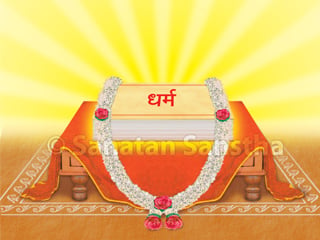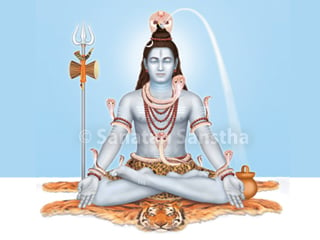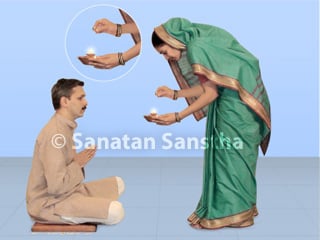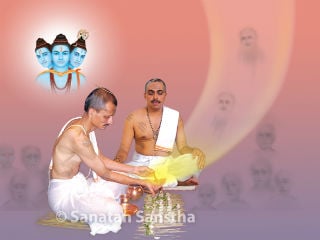Scientific perspective of the Compilers
The content of this website is published without any intention to obstruct one of the fundamental constitutional duty of every citizen – ‘scientific temper’ – as enshrined in Article 51A of the Constitution of India. Whereas, Article 25 of the Constitution confers on every Indian citizen the right to ‘Freedom of conscience and free profession, practice and propagation of religion’. Many judgments of the Indian courts have clearly said that the question is not whether a particular religious belief or practice appeals to our reason or sentiment but whether the belief is genuinely and conscientiously held as part of the profession or practice of religion. Personal views and reactions are irrelevant. An intervention may be allowed only if public order, morality and health are affected. The contents of this website do not endanger any of these three aspects and are within the constitutional right to develop a scientific temper, humanism and the spirit of inquiry and reform.
History has proved that when an individual abides by Dharma with faith, he obtains various experiences related to Dharma.
Since religion and faith are personal issues, the experiences narrated in the articles on this website too are personal. Therefore, neither can they be applicable to all nor can they be experienced by all. The articles on this website have not been written to spread blind faith in the society or to oppose medical treatment or scientific temper. The readers should study these articles prudently. – Compiler
Meaning of some spiritual terms in the articles on this website
Spiritual remedies
When someone gets innumerable thoughts, is unable to concentrate, becomes unwell psychologically or feels restless, he may perform some spiritual acts such as chanting God’s Name, meditating, Praṇayam, reciting mantras, praying etc. for his mind to become steady or happy. These spiritual acts are called ‘spiritual remedies’.
Language of percentages in the articles on this website
With the perspective that Spirituality be understood in scientific parlance, H.H. Dr Jayant Athavale (Compiler), a Psychotherapist of international eminence, has given the proportion of various components of some aspects in the language of percentages in these articles; for example, mild, medium and severe have been termed 1-30%, 31-60% and 61-100% respectively.
Divine Knowledge received by seekers is the spiritual experience that their spiritual faculty is awakened
Since some seekers of Sanatan Sanstha have been performing sadhana (Penance) for many years, their spiritual faculty has awakened, and they are getting the spiritual experience of receiving ‘Knowledge’ on various aspects. The scriptural support in the context of spiritual experiences is given ahead.
ततः प्रातिभश्रावणवेदनादर्शास्वादवार्ता जायन्ते । – Patanjalyogadarshan, Pad 3, Sūtra 36
Meaning : By observing restraint of the soul (By studying Yoga), on the strength of the faculties, the supernatural powers of understanding the subtle, unseen or distant objects (acquiring a subtle-vision), hearing Divine sounds, experiencing Divine touch, seeing Divine forms, tasting the sweetness of Divine nectar and understanding the Divine fragrance are possible.
Analysis : As described in the abovementioned verse, the spiritual faculty of some seekers of Sanatan Sanstha is awakened, and they are getting various spiritual experiences of receiving Knowledge, hearing Divine sounds, seeing subtle forms (Subtle-picture) etc.
This proves whether it is the Knowledge being received by the seekers or their subtle-vision being awakened due to study of Yoga, these have scriptural support.
Humility of seekers receiving Knowledge
In this context, the seekers concerned have bhav (Spiritual emotion) that ‘This is not my knowledge, it is truly Divine Knowledge’. With a view that the ego does not increase, instead of writing their own names at the end of the matter, they write the Name of their seats of faith and in brackets they write that they are mediums; for example – ‘A Scholar’ from the subtle-world (Through the medium of Mrs Anjali Gadgil)’.
Mrs Anjali Gadgil has the bhav that ‘A Scholar’ from the subtle-world provides her with Divine Knowledge.
If they find some matter distressful, they write ‘A mantrik’ at the end of the Knowledge instead of their own names and in brackets they write that they are mediums.
Meaning of some terms in the context of the word ‘subtle’
‘Subtle’ is that which is beyond the comprehension of the five sense organs, mind and intellect. Various scriptures contain reference to subtle knowledge; for example,
भगवतो नारायणस्य साक्षान्महापुरुषस्य स्थविष्ठं रूपम् आत्ममायागुणमयम् अनुवर्णितम् आदृतः पठति शृणोति श्रावयति स उपगेयं भगवतः परमात्मनः अग्राह्यम् अपि श्रद्धाभक्तिविशुद्धबुद्धिः वेद । – Shrimadbhagawat, Skandha 5, Adhyaya 26, Sutra 38
Meaning : The nirguṇ (Non-materialised) form of God described in the Upanishads is beyond the comprehension of the mind and intellect. Despite this, the intellect of one who reads about or hears or narrates the physical form of God becomes pure due to his faith and devotion, and he gets the knowledge of God’s subtle form or he gets its spiritual experience.
Due to sadhana, the faith and devotion of Sanatan’s seekers have developed and they get the knowledge of His subtle form or get spiritual experiences of the subtle. In short, Sanatan seekers are getting the experience of the truth in the citation of our Holy scriptures. In the content published on this website some terms in respect of the word ‘subtle’ have been used at some places. Their explanation is given ahead.
1. Subtle-world
That which cannot not be comprehended by the five sense organs (Nose, tongue, eyes, skin and ears), but whose existence is comprehended by the one who performs sadhana is known as the ‘subtle-world’.
2. Seeing, hearing in the subtle etc. (Receiving knowledge through the five subtle sense organs)
The subtle-vision of some seekers is awakened, meaning, they can perceive what cannot be seen by the physical eyes, whereas some can hear sounds or words in the subtle.
3. Picture based on subtle-knowledge
What some seekers perceive or what they see through their subtle-vision in respect of an aspect is drawn on paper in the form of a picture, which is called a ‘Picture based on subtle-knowledge’.
4. Subtle-analysis
‘Subtle-analysis’ is that which the chitta (Subconscious mind) understands about an event or a process.
5. Experiments on subtle-knowledge
Some seekers study their ability to understand the subtle dimension through tests on ‘what they perceive about an object beyond the comprehension of the mind and intellect’. This is called an ‘Experiment on subtle-knowledge’.
Meaning of the expression ‘Negative energies causing distress to the seekers’
Positive as well as negative energies are active in the environment. Through sadhana, positive energies get attracted to a seeker. Due to sadhana the presence of positive energies increases in the environment and the power of negative energies decreases. To prevent this, the negative energies create obstacles in the seeker’s sadhana. There are many stories in the Atharvaveda about demons creating obstacles in the Yadnyas (Sacrificial fires) of Sages and Seers in the ancient times. ‘At many places in the Atharvaveda, mantras have been given to thwart demons, pishach (Spirit of a deceased individual) etc.’ One mantra is given ahead.
स्तुवानमग्न आ वह यातुधानं किमीदिनम् ।
त्वं हि देव वन्दितो हन्ता दस्योर्बभूविथ ।। – Atharvaveda, Kanda 1, Sukta 7, Khanda 1
Meaning : O Deity of fire ! You reside in all creatures in the form of fire in the stomach; You encompass the entire world in the form of lightning and You are the vanguard in any Yadnya. Please forward this oblation to the Deities who we worship ! Please bring us close to the Deities who praise the oblation we have offered, and get rid of the kimidin (A type of evil pishach) who is present around us in the subtle form with the desire to kill us ! O Deity ! You possess the qualities of offering etc., and upon obeisance to You, You annihilate the demons etc. who want to kill us; hence, You please call the demon ! Or, O praiseworthy Deity of fire ! For resisting (For avenging), please push the demon in this Energy.
In brief, negative energies cause distress to those who perform sadhana and various scriptures like the Vedas have recommended spiritual remedies to ward of such distresses. In the content of this website, the words ‘negative energies’ or ‘spiritual distress’ have been used at some places. They are used as per this explanation.
Note 1 : Reference : Marathi Vishwakosh, Vol. 1, Publisher : Maharashtra Rajya Sahitya Sanskruti Mandal, Sachivalaya, Mumbai – 400 032, Edition 1 (1976), Page 194.
If visitors do not understand some term/s in the content published on this website, they may please write to us. The term will be updated on this website.
The content of this website such as ‘black energy, distressing / mayavi (Illusory) / negative energy’ etc. are in the context of ‘Tama’ or ‘ Tama component’ (as mentioned in our scriptures, for example, Shrimadbhagwadgita); words such as ‘black covering, waves / vibrations / particles’ denote ‘covering of Tama component / vibrations / particles’. The Sanskrut meaning of ‘Tama’ is darkness. Since darkness is black, Tama component has been described and depicted as black.
Meaning of some terms in the context of the word ‘subtle’
‘Subtle’ is that which is beyond the comprehension of the five sense organs, mind and intellect. Various scriptures contain reference to subtle knowledge; for example,
भगवतो नारायणस्य साक्षान्महापुरुषस्य स्थविष्ठं रूपम् आत्ममायागुणमयम् अनुवर्णितम् आदृतः पठति शृणोति श्रावयति स उपगेयं भगवतः परमात्मनः अग्राह्यम् अपि श्रद्धाभक्तिविशुद्धबुद्धिः वेद । – Shrimadbhagawat, Skandha 5, Adhyaya 26, Sutra 38
Meaning : The nirguṇ (Non-materialised) form of God described in the Upanishads is beyond the comprehension of the mind and intellect. Despite this, the intellect of one who reads about or hears or narrates the physical form of God becomes pure due to his faith and devotion, and he gets the knowledge of God’s subtle form or he gets its spiritual experience.
Due to sadhana, the faith and devotion of Sanatan’s seekers have developed and they get the knowledge of His subtle form or get spiritual experiences of the subtle. In short, Sanatan seekers are getting the experience of the truth in the citation of our Holy scriptures. In the content published on this website some terms in respect of the word ‘subtle’ have been used at some places. Their explanation is given ahead.
1. Subtle-world
That which cannot not be comprehended by the five sense organs (Nose, tongue, eyes, skin and ears), but whose existence is comprehended by the one who performs sadhana is known as the ‘subtle-world’.
2. Seeing, hearing in the subtle etc. (Receiving knowledge through the five subtle sense organs)
The subtle-vision of some seekers is awakened, meaning, they can perceive what cannot be seen by the physical eyes, whereas some can hear sounds or words in the subtle.
3. Picture based on subtle-knowledge
What some seekers perceive or what they see through their subtle-vision in respect of an aspect is drawn on paper in the form of a picture, which is called a ‘Picture based on subtle-knowledge’.
4. Subtle-analysis
‘Subtle-analysis’ is that which the chitta (Subconscious mind) understands about an event or a process.
5. Experiments on subtle-knowledge
Some seekers study their ability to understand the subtle dimension through tests on ‘what they perceive about an object beyond the comprehension of the mind and intellect’. This is called an ‘Experiment on subtle-knowledge’.
Meaning of the expression ‘Negative energies causing distress to the seekers’
Positive as well as negative energies are active in the environment. Through sadhana, positive energies get attracted to a seeker. Due to sadhana the presence of positive energies increases in the environment and the power of negative energies decreases. To prevent this, the negative energies create obstacles in the seeker’s sadhana. There are many stories in the Atharvaveda about demons creating obstacles in the Yadnyas (Sacrificial fires) of Sages and Seers in the ancient times. ‘At many places in the Atharvaveda, mantras have been given to thwart demons, pishach (Spirit of a deceased individual) etc.’ One mantra is given ahead.
स्तुवानमग्न आ वह यातुधानं किमीदिनम् ।
त्वं हि देव वन्दितो हन्ता दस्योर्बभूविथ ।। – Atharvaveda, Kanda 1, Sukta 7, Khanda 1
Meaning : O Deity of fire ! You reside in all creatures in the form of fire in the stomach; You encompass the entire world in the form of lightning and You are the vanguard in any Yadnya. Please forward this oblation to the Deities who we worship ! Please bring us close to the Deities who praise the oblation we have offered, and get rid of the kimidin (A type of evil pishach) who is present around us in the subtle form with the desire to kill us ! O Deity ! You possess the qualities of offering etc., and upon obeisance to You, You annihilate the demons etc. who want to kill us; hence, You please call the demon ! Or, O praiseworthy Deity of fire ! For resisting (For avenging), please push the demon in this Energy.
In brief, negative energies cause distress to those who perform sadhana and various scriptures like the Vedas have recommended spiritual remedies to ward of such distresses. In the content of this website, the words ‘negative energies’ or ‘spiritual distress’ have been used at some places. They are used as per this explanation.
Note 1 : Reference : Marathi Vishwakosh, Vol. 1, Publisher : Maharashtra Rajya Sahitya Sanskruti Mandal, Sachivalaya, Mumbai – 400 032, Edition 1 (1976), Page 194.
If visitors do not understand some term/s in the content published on this website, they may please write to us. The term will be updated on this website.
The content of this website such as ‘black energy, distressing / mayavi (Illusory) / negative energy’ etc. are in the context of ‘Tama’ or ‘ Tama component’ (as mentioned in our scriptures, for example, Shrimadbhagwadgita); words such as ‘black covering, waves / vibrations / particles’ denote ‘covering of Tama component / vibrations / particles’. The Sanskrut meaning of ‘Tama’ is darkness. Since darkness is black, Tama component has been described and depicted as black.

 Hindu Dharma
Hindu Dharma Hindu Festivals
Hindu Festivals Vrat
Vrat Hindu Gods
Hindu Gods Hinduism Practices
Hinduism Practices Hindu rituals
Hindu rituals